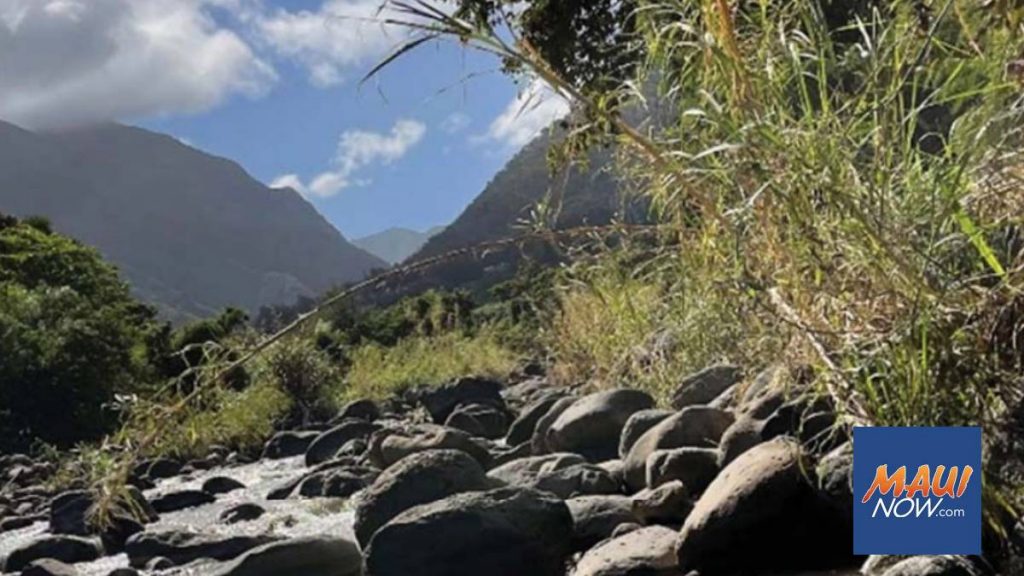County points to erosion, flooding threats in plan to reinforce Wailuku River

In attempts to avoid property loss or subdivision flooding, the County of Maui is planning to reinforce a portion of the Wailuku River bank near Wailuku Millyard.
The county said it is consulting with stream advocacy group Hui o Nā Wai ʻEhā and will conduct work that won’t interrupt mauka-to-makai stream flow or the movement of aquatic species. It acknowledged that some stream projects have altered the delicate environment.
Called the Wailuku River Bank Stabilization project, the final environmental assessment and finding of no significant impact were published Tuesday in the state Office of Planning and Sustainable Development, Environmental Review Program’s “The Environmental Notice.”
Wailuku River erosion from high flow and severe storm events has impacted two nearby commercial properties, according to the report. Proposed by the county’s Public Works department, the project would reinforce a portion of the river bank covering about 5,000 square feet.
“Continued degradation may result in flooding and further loss of property,” the report said.
The project site, about 1.5 miles inland from the ocean, is located near the north side of the Wailuku Millyard light industrial subdivision area, a mix of light industrial and commercial businesses around Wili Pā Loop.
Proposed work includes excavation, regrading and reinforcement of the river bank slope using grouted rip-rap, which consists of cobbles and boulders with concrete infill. Other construction is detailed in the report.
“The project is designed to protect surrounding properties while minimizing impacts to the river’s water quality and ecological functions,” the report said.
Previous actions involving channelization and flow diversion have altered the stream environment, the report said.
“The currently proposed action involves work within only half of the river channel directly adjacent to the project site, in order to preserve uninterrupted mauka-to-makai flow and limit any disruption to movement and migration of aquatic species,” it said.
Best management practices will prevent adverse impacts to the aquatic environment, and project officials intend to continue to seek consultation with the Hui o Nā Wai ʻEhā throughout the design phases.
Of all the studied alternatives, such as vegetative bank stabilization and rigid armoring solutions, the rip-rap would help protect against 100-year storm events, among other benefits.
Wailuku River, formerly known as ʻĪao Stream, starts near the top of the West Maui Mountains and runs through ʻĪao Valley out to the Pacific Ocean. It covers about 26 miles of streams and tributaries.
Wailuku River is part of Nā Wai ʻEhā, or “The Four Great Waters,” including Waikapū, Waiehu and Waiheʻe streams. The nonprofit Hui o Nā Wai ʻEhā advocates for the protection of the streams and mauka-to-makai flow.
Although no cost estimate or project timeline are clearly identified in the final environmental assessment, the project’s preferred alternative is listed at $1.3 million. The proposal would have to gain more than a dozen federal, state and county permits and approvals to move forward.
The planned use of county land and funds triggers the need for the state environmental report.










